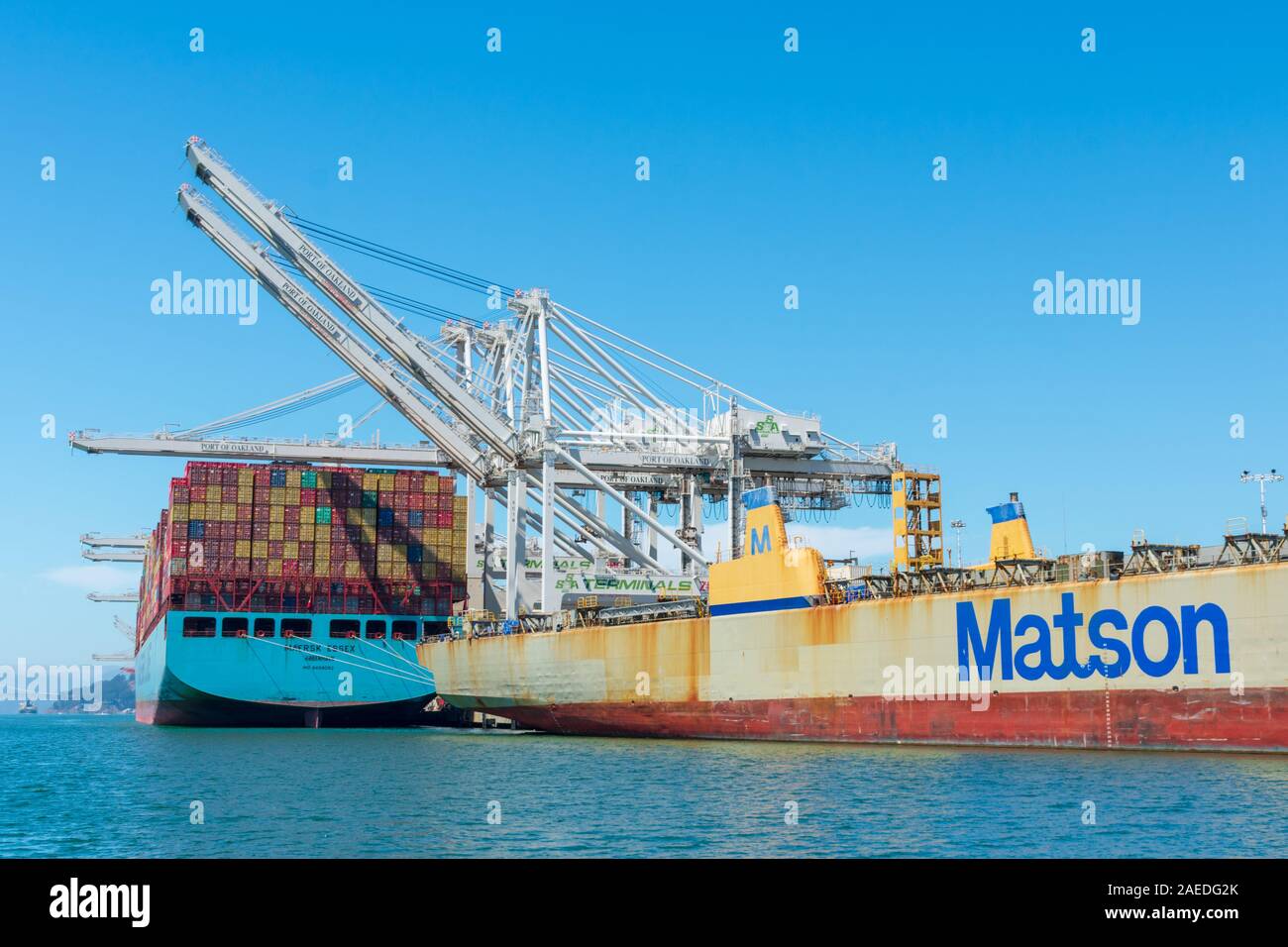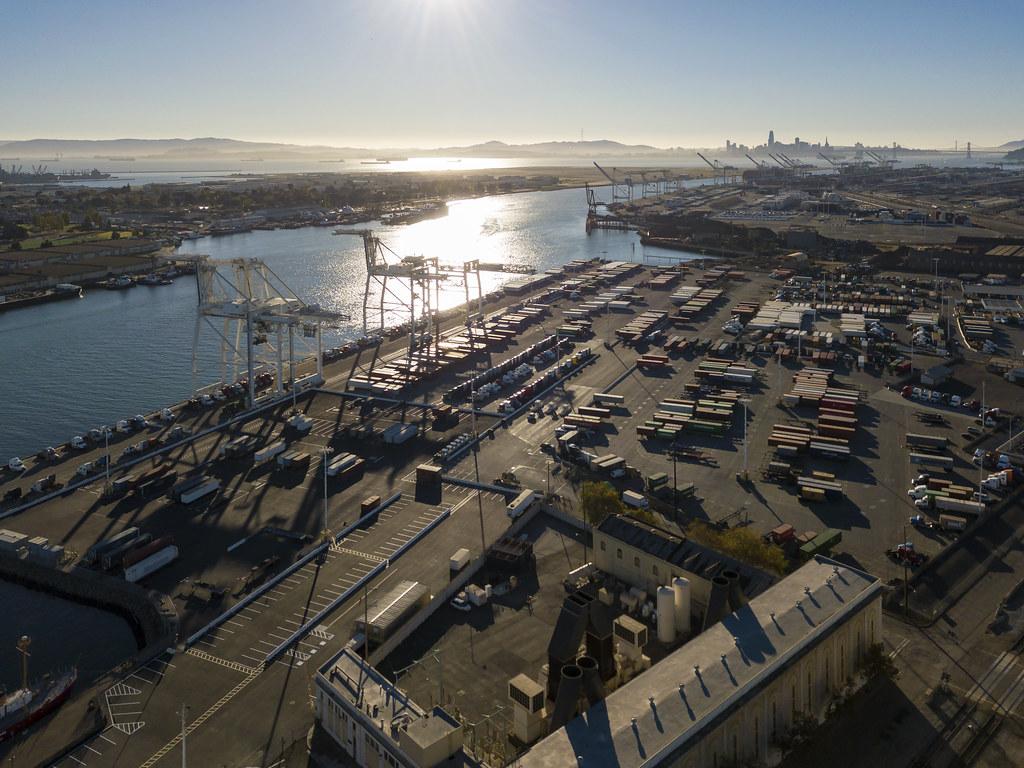Oakland International Container Terminal: Overview and Key Statistics

The Oakland International Container Terminal (OICT) is a major marine terminal located in the Port of Oakland, California. Established in 1962, OICT has grown to become one of the busiest container terminals on the West Coast of the United States, handling a significant portion of the region’s international trade.
The Oakland International Container Terminal, a bustling hub for global trade, echoes with the rhythm of commerce. Yet, beneath its surface, a hushed whisper weaves through the corridors of connectivity, carrying a link to a distant realm of entertainment and speculation.
Rumors of Justin Timberlake’s HIV status reverberate, blurring the lines between fact and fiction. As the terminal continues its tireless dance of logistics, these whispers serve as a reminder that the threads of human curiosity extend far beyond its concrete walls.
OICT is strategically located on the eastern shore of San Francisco Bay, providing easy access to major shipping lanes and international markets. The terminal covers an area of approximately 200 acres and features a modern infrastructure designed to handle large container vessels efficiently.
As a lifeline for global trade, Oakland International Container Terminal stands tall, connecting the city to the world. Beyond its bustling shores, the spirit of Juneteenth permeates the city, a testament to resilience and freedom. Juneteenth Oakland celebrates the emancipation of enslaved African Americans, a poignant reminder of the struggle for equality that continues to shape our society.
Yet, the terminal remains a beacon of progress, where the flow of goods symbolizes the interconnectedness of cultures and the promise of a brighter future.
Container Volume and Vessel Calls
OICT has consistently ranked among the top container terminals in the United States in terms of container volume. In 2022, the terminal handled over 2.5 million twenty-foot equivalent units (TEUs), a measure of container capacity. This represents a significant increase from the 1.8 million TEUs handled in 2017, indicating the growing importance of OICT in the global supply chain.
Oakland International Container Terminal, a vibrant hub of maritime commerce, buzzes with the energy of global trade. As the sun sets, casting an ethereal glow on the waterfront, the mind’s eye wanders to the American Hotel Sag Harbor , a sanctuary of tranquility nestled amidst the vibrant streets of New York.
While the terminal echoes with the symphony of industry, the hotel invites us to immerse ourselves in the serenity of a coastal retreat, where the sound of waves replaces the hum of cargo ships.
The terminal also handles a large number of vessel calls each year. In 2022, OICT received over 1,200 vessel calls, including container ships, tankers, and bulk carriers. The terminal’s ability to accommodate large vessels and handle high volumes of cargo efficiently has made it a preferred destination for shipping lines worldwide.
Cargo Throughput
OICT handles a diverse range of cargo, including manufactured goods, agricultural products, and raw materials. The terminal’s modern infrastructure and efficient operations allow for the seamless movement of cargo between ships, trucks, and railcars.
The Oakland International Container Terminal, a bustling hub of global trade, witnessed a curious turn of events as news of Justin Timberlake’s arrest in Sag Harbor spread like wildfire through the terminals. While dockworkers unloaded cargo from distant shores, whispers of the pop star’s legal troubles filled the air, creating an unexpected ripple amidst the otherwise mundane operations.
Yet, as quickly as the news had arrived, it faded into the background, leaving the terminal to its steady rhythm of loading and unloading, a reminder of the ceaseless flow of life, both within and beyond its bustling gates.
In 2022, OICT handled over 10 million tons of cargo, a significant increase from the 7.5 million tons handled in 2017. This growth in cargo throughput reflects the growing demand for international trade and the increasing importance of OICT as a major gateway for global commerce.
Key Performance Metrics
The following table summarizes the key performance metrics for OICT over the past 5 years:
| Year | Container Volume (TEUs) | Vessel Calls | Cargo Throughput (tons) |
|---|---|---|---|
| 2017 | 1,800,000 | 950 | 7,500,000 |
| 2018 | 1,950,000 | 1,020 | 8,000,000 |
| 2019 | 2,100,000 | 1,100 | 8,500,000 |
| 2020 | 2,250,000 | 1,150 | 9,000,000 |
| 2021 | 2,400,000 | 1,200 | 9,500,000 |
| 2022 | 2,500,000 | 1,250 | 10,000,000 |
Oakland International Container Terminal


Oakland International Container Terminal: Infrastructure and Equipment
Infrastructure
The Oakland International Container Terminal (OICT) boasts an impressive infrastructure that supports its efficient operations. The terminal features:
– Berths: OICT has 10 berths with a total length of over 8,000 feet, accommodating vessels of various sizes and capacities.
– Cranes: The terminal is equipped with 24 ship-to-shore (STS) cranes, each with a lifting capacity of 100 tons, and 70 rubber-tired gantry (RTG) cranes for yard operations.
– Yard Space: OICT has a vast yard space of over 300 acres, providing ample storage capacity for containers.
Equipment
OICT is well-equipped with state-of-the-art equipment to handle the large volume of cargo it receives. The terminal’s equipment includes:
– Reach Stackers: The terminal operates a fleet of reach stackers for efficient container handling within the yard.
– Top Handlers: OICT utilizes top handlers for stacking and retrieving containers in the yard, maximizing space utilization.
– Automated Guided Vehicles (AGVs): The terminal employs AGVs for automated container movement within the yard, enhancing efficiency and reducing operational costs.
Comparison with Other Major Container Terminals
The following table compares the infrastructure and equipment of OICT with other major container terminals in the region:
| Terminal | Berths | STS Cranes | RTG Cranes | Yard Space |
|—|—|—|—|—|
| Oakland International Container Terminal | 10 | 24 | 70 | 300 acres |
| Los Angeles/Long Beach Container Terminal | 13 | 30 | 80 | 400 acres |
| Seattle-Tacoma Container Terminal | 8 | 18 | 50 | 250 acres |
| Vancouver Container Terminal | 9 | 20 | 60 | 280 acres |
As evident from the table, OICT is comparable in terms of infrastructure and equipment to other major container terminals in the region. Its well-equipped infrastructure and modern equipment enable it to handle a high volume of cargo efficiently and reliably.
Oakland International Container Terminal


Oakland International Container Terminal: Sustainability and Environmental Initiatives
The Oakland International Container Terminal prioritizes sustainability and environmental protection in its operations. The terminal utilizes renewable energy sources, including solar panels and wind turbines, to reduce its carbon footprint. It has implemented energy-efficient equipment and practices to minimize energy consumption and waste generation. The terminal also participates in waste reduction programs, such as recycling and composting, to divert waste from landfills.
Oakland International Container Terminal has received numerous environmental certifications and awards for its sustainability efforts. These include:
– Green Marine certification for environmental performance
– EPA SmartWay Excellence Award for sustainable transportation practices
– California Green Business Award for environmental leadership
Best Practices for Environmental Sustainability
To minimize its environmental impact, Oakland International Container Terminal has implemented several best practices:
– Using energy-efficient lighting and motion sensors to reduce energy consumption
– Optimizing equipment utilization to minimize fuel consumption
– Implementing a comprehensive waste management program to reduce waste generation
– Promoting sustainable transportation practices, such as using alternative fuels and encouraging rail and maritime transport
– Educating employees and stakeholders on environmental best practices
Oakland International Container Terminal, a bustling hub of global trade, welcomes vessels from distant shores. Its cranes dance gracefully, unloading precious cargo that nourishes our cities. But beyond the towering containers, whispers of dwi justin timberlake echo through the terminal.
The rhythmic hum of forklifts mingles with the faint strains of pop melodies, creating a surreal symphony that underscores the interconnectedness of our world.